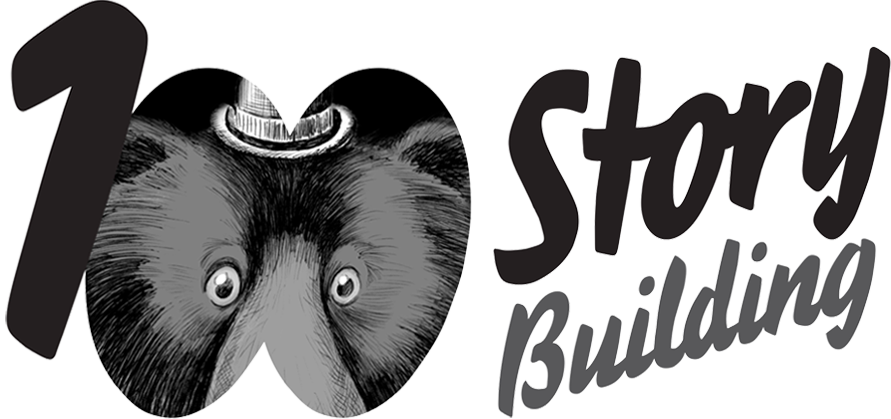Creativity and Outcomes for Children and Young People
At the heart of 100 Story Building is the idea that children and young people are capable of creating powerful work. When we open up opportunities and provide support for them to take risks with their creativity, and celebrate their work, we contribute to their development of identity, and relationships between individuals and communities are strengthened.For us, this means we strive for continuous improvement and deep understanding of our programs and services, and a collaborative, co-created approach to development.But what does that look like in practice? What can co-created, collaborative opportunities for children and young people achieve?Inspired by our (rented) time machine, we invited a group of people representing children, young people and their families, and those working in education, arts, youth work and local government to go Back to the Future with us. We wanted to stretch our minds and think towards a future where children and young people have had opportunities to engage creatively in learning throughout their lives.First, we went back to basics. What do we mean by creativity? The standout themes here were risk, vulnerability, stretch, unexpectedness and personal experience.We talked about creativity arising from different perspectives and the ways our backgrounds, cultures, upbringings and experiences shape our individual creativity. Unexpected and surprising things come from the combination of things that make us different. The expression of creativity is both internal and external and involves risk and uncertainty. We agreed that safe spaces to allow for creativity are important and should be fostered. But also the individual defines that safe space and efforts to create those spaces should reflect that.What do those spaces currently look like? There are both structured and unstructured opportunities for children and young people to exercise creative risk-taking and engagement. They exist within schools, at home, in the community and range from free play activities to defined artistic programs. Different types of creativity are enacted in these spaces, and they utilise a wide variety of tools: language, technology and traditional arts practice. There was a common thread running through the discussions that we could do more to encourage children and young people to both generate their own creative opportunities, and to access more structured ones. It was also acknowledged that spaces where creative opportunities exist were potentially limiting this through their focus on standardised measurement. We asked: how can creativity be valued in this context?This led us to collaborate on some ideas for supporting creative opportunities for children and young people. Excitingly, these included ideas for handing over program design and development to children and young people themselves, for advocating for and communicating the benefits of creative spaces throughout leadership and institutional hierarchies and for fostering new spaces. Threading throughout these discussions was the importance of sharing, connecting and collaborating with others in the school-family-community space.We’re looking forward to seeing where these ideas lead, and would like to share these summaries for others to consider, discuss and respond to. Not all of our questions had immediate answers, and there were new questions we collectively asked. To follow up some of these threads, the next event will pick up the theme of value and outcome measurement in creative activities.
This In the Community event was delivered for 100 Story Building by Thirty Waves and supported by Lord Mayor’s Charitable Foundation. We’d like to thank all the participants who generously contributed their time and ideas on improving wellbeing outcomes for children and young people in our community. If you’d like to be involved in future events, please email Jessica Tran, jess@100storybuilding.org.au.
